Tummy Tuck (Abdominoplasty)
What is a tummy tuck?
Tummy Tuck, or abdominoplasty, is a surgical procedure that treats stretched abdominal skin and muscles through an incision along the lower abdomen. A tummy tuck helps to sculpt a protruding belly by removing excess skin and tightening the abdominal wall musculature, flattening and shaping the abdomen. Liposuction is typically included in this procedure to remove stubborn fat and create an even more comprehensive result. Additionally, a tummy tuck may be able to remove some abdominal stretch marks. The incision, and thus your scar, is placed just above the pubic area so as to not be visible in a swimsuit.
If you are struggling with excess skin after weight loss or pregnancy, you have likely found that excess skin cannot be eliminated through diet and exercise—only plastic surgery can accomplish this. Abdominoplasty not only removes excess skin, but also treats abdominal bulging or other unwanted symptoms resulting from stretched muscles (diastasis recti), which are especially common after pregnancy. A tummy tuck is also often included in a full mommy makeover—a customized set of procedures, such as breast surgery, tummy tuck, and liposuction—that restores your pre-pregnancy shape. Philadelphia plastic surgeon Dr. Brannon Claytor is an expert in the tummy tuck procedure, and he is highly sought-after due to his use of a drain-free tummy tuck technique that eliminates the need for patients to wear post-operative drains.
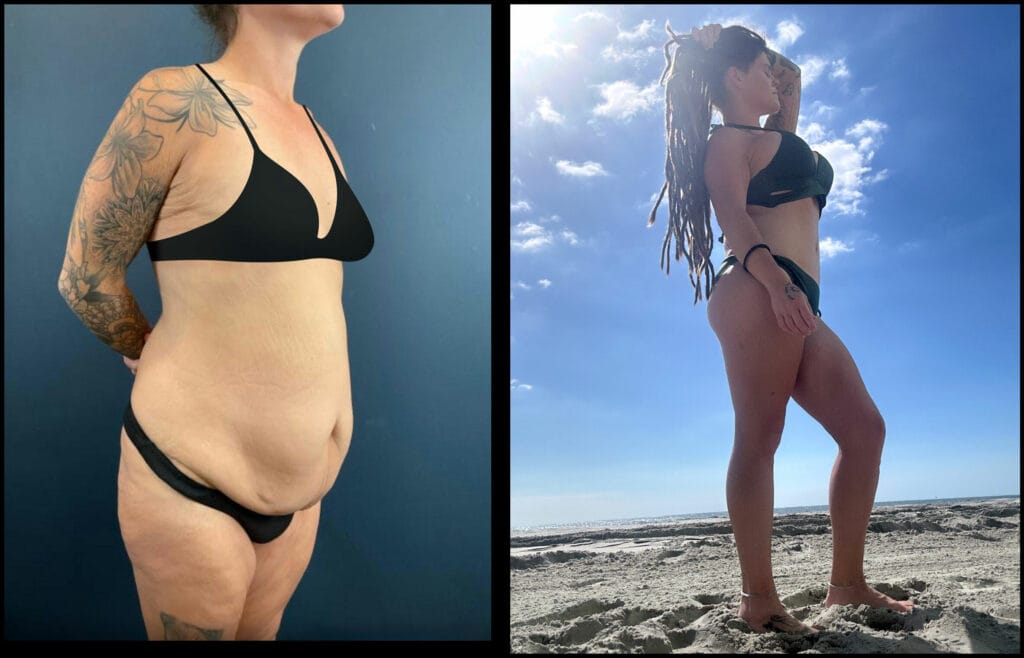
Torso Tuck with Abdominoplasty for Men
Dr. Claytor fully customizes abdominoplasty surgery for men to preserve and enhance a trim, masculine physique. During a “torso tuck,” your abdominal muscles and skin will be tightened and excess skin removed. Dr. Claytor can also include liposuction or extended incisions, as needed, to address excess skin around the waist and stubborn fat deposits throughout the abdomen and lower back.
Dr. R. Brannon Claytor
Dr. Claytor is board certified by the American Board of Plastic Surgery and holds over 20 years of experience as a cosmetic plastic surgeon. An innovator and teacher in the field of plastic surgery, he uses advanced techniques like the drain-free tummy tuck and deep plane facelift to streamline recovery and provide natural-looking, durable results.
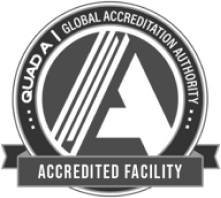
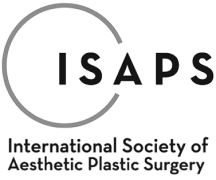
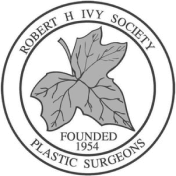

Hear What our Tummy Tuck Patients Have to Say
In these audio stories, Dr. Brannon Claytor engages in heartfelt conversations with his tummy tuck patients, uncovering their plastic surgery experiences. From their encounters with the procedure to the transformative outcomes, these stories provide a genuine portrayal of what it’s like to navigate the post-operative stages, spanning weeks, months, and beyond after a tummy tuck surgery.
How do I know if I am a good candidate for tummy tuck surgery?
The best candidates for abdominoplasty are patients who have excess fat, loose skin, and stretched muscles in the abdominal area that have not responded to diet and exercise. Many patients undergo this procedure after pregnancy or massive weight loss from bariatric surgery. Patients should be in good overall health. Do not use an abdominoplasty as a substitute for weight loss. Anyone planning on losing a significant amount of weight, and women planning on having (more) children, should wait before undergoing abdominoplasty or a mommy makeover. During your personal consultation at our Main Line office, Dr. Claytor will sit down with you to discuss your goals and determine if you are a candidate for surgery.
Listen to more tummy tuck patient stories »
What happens during a tummy tuck (abdominoplasty) procedure?
During the tummy tuck procedure, you will be asleep under general anesthesia. The incision is usually placed along the lower abdomen, where a bikini can conceal the scar. First, Dr. Claytor will release the belly button from the excess skin. Second, he removes the excess skin and fat. Then, the abdominal muscles, which have typically been stretched, are pulled together and sutured for a firmer abdomen and narrower waist. After that, the separated flap of skin is then brought down over the newly tightened muscles, and the belly button brought up through a small incision in the skin.
Finally, he closes the incisions and places sterile surgical dressings over the sutured areas. The tummy tuck procedure takes approximately 3-4 hours to perform. If you are a good candidate for a drain-free tummy tuck, then you may not need to wear a drain during recovery.
View before and after photos of Dr. Claytor’s abdominoplasty patients.
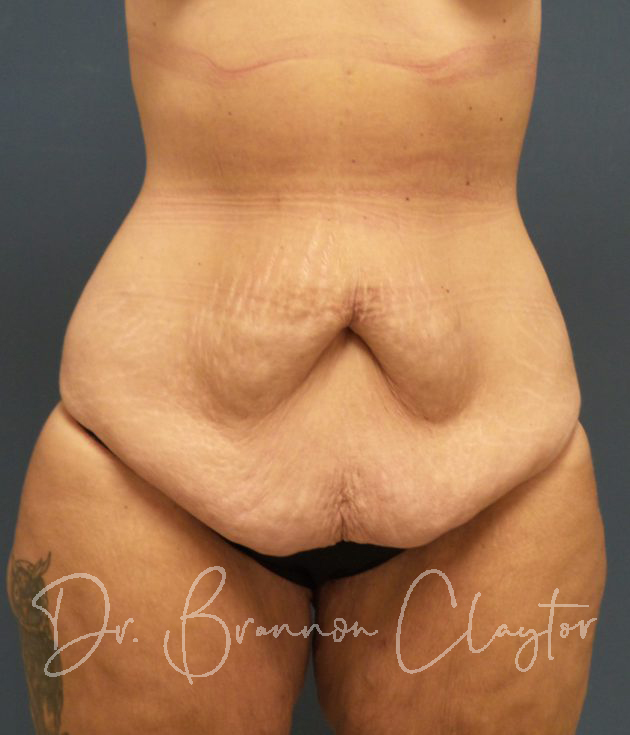
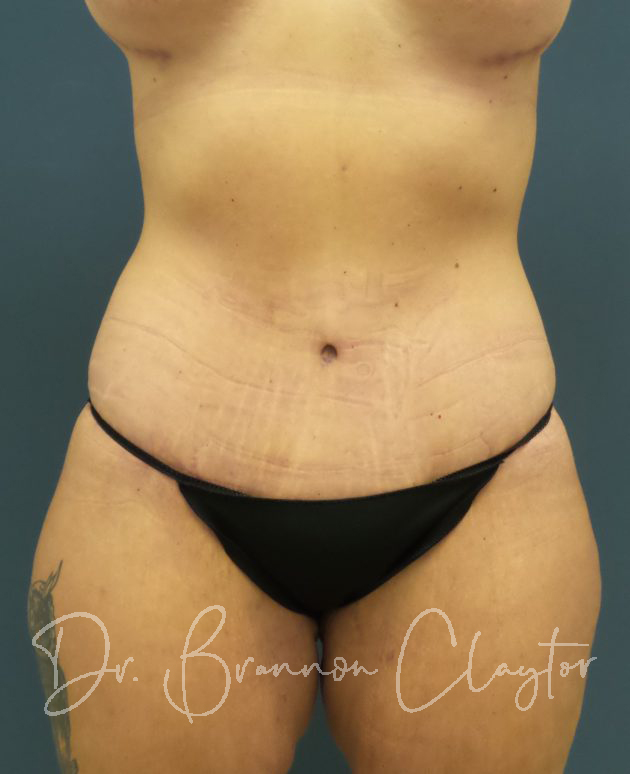
*Individual results may vary.
What are the different types of tummy tucks?
There are several types of tummy tucks, including a drainless tummy tuck and mini tummy tuck. Dr. Claytor can help you determine which is best for your desired results.
Drainless Tummy Tuck
A drainless tummy tuck is not just a standard tummy tuck without the use of drains; rather, it involves a unique surgical technique that leaves a thin layer of scarpas fascia intact to allow for natural lymphatic drainage. This eliminates the need for cumbersome post-surgical drains.
One of the modifications to the classic tummy tuck procedure involves placing quilting sutures, or sparing the scarpas fascia which has the most lymphatic drainage tissue in the abdominal wall deep to the skin.
Dr. Claytor teaches an advanced course on this scarpas-sparing abdominoplasty technique at national meetings for The Aesthetic Society. During this procedure, he carefully keeps scarpas fascia intact so that this connective tissue may act as a lymphatic drainage system.
Dr. Claytor’s independent research has demonstrated that fluid collection rates following surgery with this technique are actually less than that of those patients who have drains post-surgery; the no-drain tummy tuck technique is safe and even encourages faster recovery. For this technique, you will see additional benefits from the fact that less cautery and more discontinuous undermining are used during the surgery. This allows for improved blood supply and less traumatic tissue disruption—and a reduced strain on your healing body.
However, remember that this procedure is not simply a tummy tuck without drains: a drain-free tummy tuck requires extensive skill and experience. It is essential to undergo your tummy tuck procedure with a Board Certified Plastic Surgeon with years of experience performing successful drainless tummy tucks, such as Dr. Claytor.
Video Transcript
Hi, Dr. Claytor here talking about the drainless tummy tuck and why this is significant and why so many patients are coming and asking about it. Well, here I have certificates of the last five years where I have taught this at the Aesthetic Society meeting. Why is this so significant? Well, patients are looking for faster recovery, better aesthetic results, and fewer complications. The drainless tummy tuck can help achieve that.
By preserving the body’s own lymphatic system, we’re able to achieve a drainless follow-up result — no drains necessary. Leave the lymphatic system intact and allow the body to train the lymphatics on its own. This is a cross-section. Up here is the skin, down here is the fascia or the muscles of the abdominal wall, and in between are the fat layer and blood vessels and Scarpa’s fascia. This middle layer here is Scarpa’s fascia and which carries a significant amount of the lymphatics of the abdominal wall.
The entire body has a very rich network of lymphatics and traditionally, or the traditional type abdominoplasty, tummy tuck, removed all of this and therefore removed the lymphatic drainage from the abdomen thus necessitating the need for drains. By preserving this layer we’re able to leave intact the lymphatic system of the abdominal wall. By doing this discontinuous undermining and liposuctioning, we’re able to thin that upper trunk and get a nice tight contoured high-definition liposuction. The lower abdomen section is removed.
Now you don’t want to leave any abdominal girth or thickness deep to Scarpa’s fascia so what’s done is liposuctioning of that layer where you go in and you liposuction out that area where you have a direct excision of it. But you maintain and keep that little thin layer’s Scarpa’s fascia which is as thick as a piece of paper or one of my certificates. That’s it, that’s the thickness so it’s not causing any abdominal girth or thickness or fullness but it’s maintaining your body’s own lymphatics which allow for internal drainage and avoid the need for drains in the postoperative period.
By preserving this lymphatic layer, we are able to achieve a drainless final result – highly sculpted, excellent aesthetics, no drains necessary.
Mini Tummy Tuck
A partial abdominoplasty, or a mini tummy tuck, is similar to abdominoplasty, but involves shorter incisions and is an overall less invasive procedure. It is ideal for patients with lower abdominal fat. A partial abdominoplasty produces less scarring (in the bikini line) and has a shorter recovery time than abdominoplasty.
Full tummy tuck or mini tuck – Which is right for me?
To help you decide which tummy tuck procedure is best to help you reach your goals, Dr. Claytor has made this video in which he explains the difference between a full tummy tuck and a mini tummy tuck, illustrates where the incisions will be placed, and explains how recovery will differ between the two:
Video transcript »
Dr. Claytor here. Many patients come in and ask about the difference between a full tummy tuck and a mini-tummy tuck. They want to know which one is better and if one has a faster recovery time. We’ll simplify it for you. If your issue spans your entire abdomen, you should consider a full tummy tuck. If the area of concern is from your belly button down to your Mons, then a mini tummy tuck is what you’re looking for.
A mini tummy tuck involves an incision that goes down to be hidden by underwear or a bikini. The dissection is done up but no further than the belly button. While a significant amount of tissue can be removed, the belly button stays attached to the abdominal wall, albeit possibly pulled down a bit. The excess skin is brought down and removed. Simultaneously, liposuction can be used to thin and contour the area below the umbilicus, improving the overall shape.
In some cases, individuals may have a bulge or pooch below the belly button due to rectus diastasis, where the abdominal muscles have separated. Repairing these muscles during a mini tummy tuck can flatten and improve the contour of the lower abdomen. Liposuction can also enhance body sculpting and contouring in this area.
A full abdominoplasty, on the other hand, involves a more extensive dissection, reaching up to access the rectus muscles that have separated. This procedure requires reconstructing the belly button as the tissue is lifted and a larger piece of tissue may be excised. The result is a more comprehensive transformation of the abdominal area.
Ultimately, the choice between a full and mini tummy tuck depends on your specific needs and goals. It’s essential to have a conversation with your plastic surgeon to determine which option is best for you. Thanks so much!
SmartLipo
If your goal is to trim down your abdominal profile so that less bulging is visible in clothes, a SmartLipo procedure under local anesthesia or a liposuction procedure in the hospital may be exactly what you are looking for. Compared to a tummy tuck, this fat reduction procedure involves less cost, making it desirable for many patients. However, to achieve the goals that most patients are interested in, a tummy tuck will be recommended.
How a tummy tuck is combined with liposuction
Video Transcript
I’m Dr. Brannon Claytor, board-certified plastic surgeon. I’d like to talk to you about the tummy tuck operation with concomitant liposuction. Here the suction areas are marked on the abdomen to ensure and maximize abdominal contours and definition. The tumescent fluid is injected into the abdomen, and then the liposuction is performed. You can see here the fat being withdrawn, which is allowing for the skin to be contracted. The red and blue represent blood vessels. Suction area 4 is the abdominoplasty portion to be removed. The central area is dissected down to the rectus fascia; laterally, the scarpa’s fascia is left intact to allow for lymphatic drainage. The upper flap is elevated up to the level of the xiphoid. Additional liposuction of the upper flap is performed. Cross sectional analysis of this demonstrates reduction of the fat in this area with protection of the blood vessels to improve wound healing. The rectus diastasis is repaired with sutures. If the scarpa’s fascia is still full on the inferior aspect, additional liposuction can be performed to de-bulk this area and minimize the contours. The green areas represent the intact lymphatics that are left in scarpa’s fascia. Excess scarpa’s fascia is excised superiorly to improve abdominal contour. The flap is advanced to closure and the umbilicus is delivered and inset. This has been a demonstration of tummy tuck with concomitant liposuction. I’m Dr. Brannon Claytor, board-certified plastic surgeon. I hope you found this 3D animation helpful as you explore your options for abdominal rejuvenation.
When will I see my tummy tuck results?
Initial tummy tuck results—as in the flatter, more toned abdominal area provided by abdominoplasty—are visible right away. With a balanced diet and regular exercise, tummy tuck results are long-lasting. Conversely, becoming pregnant or gaining a substantial amount of weight after abdominoplasty can change your results. Individual results may vary on a case by case basis.
“My tummy tuck with hernia repair journey began by sending an email through the website. I received a response that same day. I felt the initial communication was very straightforward, and that was helpful. I was extremely nervous for the consult but as soon as I met Dr. Claytor all my concern went away. He has an amazing bedside manner and way of making you feel comfortable with him. Once my surgery was booked the rest of the team took over and they were amazing! Every person I dealt with was so kind and supportive. There wasn’t a question or concern that I didn’t receive an immediate response to with kindness. I felt prepared each step of the way leading up to my surgery. Everything the team or Dr. Claytor said would happen did, and I was so thankful. My recovery through to my office visits have been thorough and thoughtful. This was a major procedure for me and not having to worry about anything but healing and loving the new me is something I will forever be grateful to Dr. Claytor and his team for.”
What is recovery like after a tummy tuck procedure?
After abdominoplasty, patients may experience swelling, bruising, and discomfort. You will need to wear a compression garment for a period of time after surgery. You should strictly avoid strenuous activity, such as lifting heavy objects, for several weeks, but you can likely return to work after a week or two. Complete recovery times vary from 2 weeks to 4 weeks.
View before and after photos of Dr. Claytor’s abdominoplasty patients.
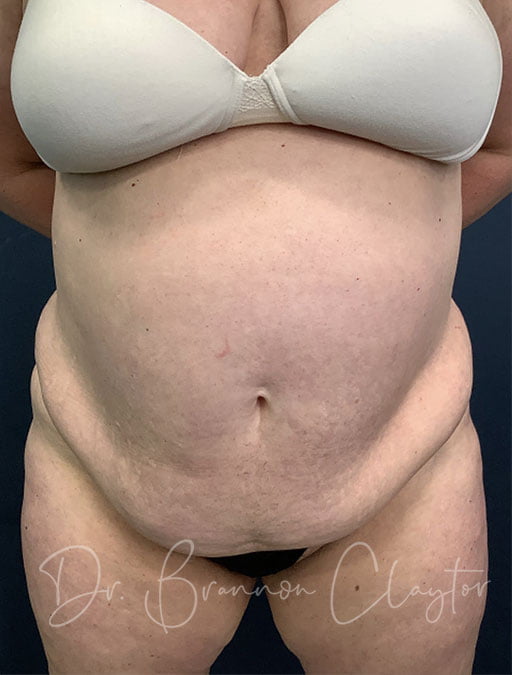
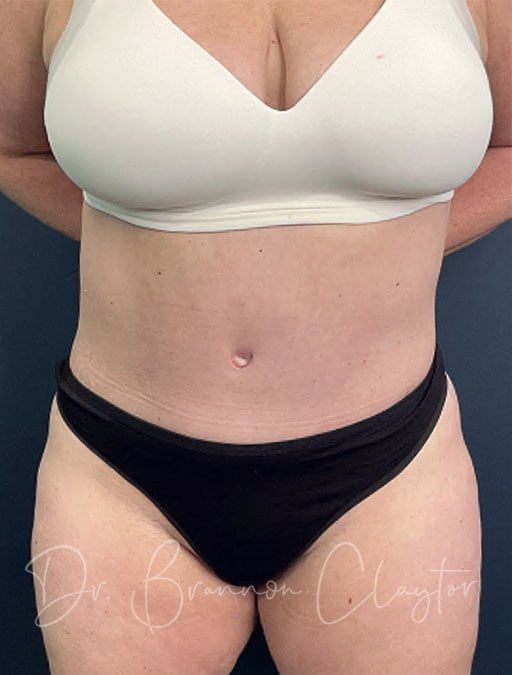
Are there risks and side effects associated with a tummy tuck?
In addition to the usual risks associated with surgery and anesthesia, the unique risks and complications associated with abdominoplasty include asymmetry, a poor aesthetic result, unsightly scarring, loose skin, skin numbness, and a need for revision surgery.
In your personal consultation with Philadelphia board certified plastic surgeon Dr. Claytor, we will review your medical history, including any medications, as well as any allergies or past surgeries you have had in order to minimize the risk of complications.
Following the post-operative instructions surgery closely can ensure that you can further minimize the risk of tummy tuck surgery. These precautions may include avoiding certain activities, taking prescribed medication, keeping the surgical site clean and dry, and attending your follow-up appointments.
“The experience with Dr. Claytor has been nothing but excellent, both the people and the results. He evaluates each and every patient. I respect those doctors who are on-time appointments. His amazing staff is just wonderful; kudos to Debbie, Emily and Heather. Night before my surgery, Dr. Claytor personally called me to answer any final questions and calm my anxiety about the procedures. When I got home, he called to check on me. I would recommend Dr. Claytor and his entire staff! You’ve changed my life for the better!”
How much does a tummy tuck procedure cost in Philadelphia?
The cost of your Philadelphia Tummy Tuck procedure will depend on several factors including your specific needs and goals. The final cost for a surgical procedure such as this will include a surgeon’s fee, a hospital or surgery center fee, and an anesthesia fee, which vary by procedure. We offer financing options to help patients by breaking down costs into monthly payments. Schedule your consultation at our Bryn Mawr office to learn more and determine if abdominoplasty surgery is the right choice for you.
- Key Benefits
- Glossary
- Repair of diastasis recti: A tummy tuck surgically repairs diastasis recti (separation of abdominal muscles), restoring a smoother and firmer abdominal profile.
- Removal of excess skin: Abdominoplasty eliminates loose, sagging skin, often resulting from significant weight loss or pregnancy.
- Improved clothing fit: Patients often experience a better fit and more comfort with clothing and swimwear due to the reduced waistline and flatter abdomen.
- Removal of stretch marks: Although not its primary goal, the procedure can reduce or eliminate stretch marks located on the excised skin.
- Hernia repair: A tummy tuck can sometimes aid in the correction of ventral hernias, by strengthening the abdominal wall.
- Improved posture: The tightened abdominal muscles can provide better support to the spine, contributing to improved posture and potential relief from certain types of back pain.
Abdominoplasty: The medical term for a tummy tuck, a surgical procedure that removes excess fat and skin from the abdomen.
Diastasis Recti: A condition where the large abdominal muscles separate, commonly occurring during pregnancy.
Endoscopic Surgery: A less invasive surgical technique utilizing small instruments and cameras to perform the procedure.
Hematoma: A collection of blood outside of blood vessels that might occur after surgery.
Incision: The cut made in the skin during surgery.
Intravenous Sedation: Medication administered through the veins to help patients relax during the procedure.
Liposuction: A procedure often performed in conjunction with a tummy tuck to remove excess fat.
Modified Tummy Tuck: A less extensive form of tummy tuck for individuals with minimal excess skin and fat.
Muscle Tightening: The process of suturing separated abdominal muscles together during abdominoplasty.
Recovery Period: The time it takes for a patient to heal post-surgery.
Seroma: Accumulation of serous fluid that may occur in the area where tissue has been removed.
Skin Elasticity: The skin’s ability to return to its original form after being stretched.
Skin Excision: The surgical removal of skin.
Sutures: Stitches used to hold body tissues together after an incision or injury.
Underlying Muscle Repair: Correction of muscle separation or weakness as part of the tummy tuck procedure.
Umbilicus: The navel or belly button; often repositioned during a tummy tuck.
VASER Lipo: A type of ultrasound-assisted liposuction often used in conjunction with tummy tuck procedures.
What non-surgical procedures can help to achieve a more attractive abdomen area
There are several non-surgical and minimally invasive procedures for improving abdominal contours and reducing fat and tightening skin around the stomach area. These procedures typically incorporate cryolipolysis (fat-freezing), radiofrequency, or ultrasound technologies.
Non-surgical fat reduction treatments are ideal for patients who want to reduce stubborn fat without the risks and downtime associated with surgical procedures. The benefits of non-surgical fat reduction include:
- Little-to-no downtime
- No anesthesia
- No incisions or scars
- Quick treatment times
- Minimal side effects
Overall, non-surgical body contouring is a relatively easy and convenient way to improve your look by firming skin or reducing a fat bulge. However it should be noted that the effects of such procedures are typically mild, sometimes unpredictable, and not all patients are good candidates for these treatments.
For the typical patient seeking to address excess fat or skin sagging on the abdomen, a surgical approach will yield the most satisfying results. This is because a surgeon can customize their technique to thoroughly address the patient’s individual concerns and sculpt a shape that enhances the patient’s overall figure. Tummy tuck surgery can reduce stretch marks, improve belly button shape, emphasize hourglass curves, and address other details to achieve a more attractive abdomen, whereas non-surgical technology cannot yet adequately address such details.
Furthermore, because multiple non-surgical treatments are often needed to achieve satisfying results, it often ends up resulting in a total cost similar to that of a surgical tummy tuck.
Dr. Claytor evaluates a patient based on RealSelf photos
Video Transcript
Hi, I’m Dr. Claytor. Welcome to Claytor Noone Plastic Surgery. We’re answering RealSelf-questions today. Here’s a patient who, ten years after pregnancy, is very frustrated with the excess skin and stretch marks on her abdomen. There’s a lateral, here’s an oblique photograph, and you can see she’s pinching, and what that means is she has a lot of extra skin.
So, somebody talking to her about doing a CoolSculpting or a SculpSure treatment for this is not going to be able to treat that excess skin. That’s really an excisional procedure to remove that skin and tighten the lower abdomen. Here we are, looking at her from straight on, and you can see she has a significant amount of striae. This is something that we can improve a little bit with the Fraxel laser, and we can lighten this, and there’s some different laser techniques that we can do to improve this, but to truly treat this would be an incision across the lower abdomen and then down just above the pubis area to remove this skin and then re-drape and lower the abdomen, providing a tummy tuck procedure or an abdominoplasty.
Now, a lot of times when you do this procedure, people talked about using drains in the post-operative period. You don’t have to do that, and you can use the scarpas-sparing abdominoplasty, or simply stated, you can leave certain anatomic parts of the abdominal wall which help with lymphatic drainage and clearing out any sort of excess fluid that can be left over after any tummy tuck procedure. I can’t really tell from her photographs here, but it would seem that she could have a full tummy tuck which would give her the best results.
Where will I have scars?
Full tummy tuck scars are placed along the base of the abdomen, just above the pubis, from hip bone to hip bone. There will also be a small scar hidden within the folds of the navel (umbilicus). Mini tummy tuck scars are typically shorter in length and do not include a belly button scar.
Tummy tuck scar revision
Dr. Claytor uses advanced suturing techniques and provides recovery protocols that are meant to help your scar heal to fine, faint line over time. However, some patients may require a scar revision surgery or scar treatment with laser or microneedling to help improve its appearance (read about Dr. Claytor’s award-winning research on this topic here). In the video below, Dr. Claytor shares a scar revision case with one of his patients who is one year post-op from her abdominoplasty.
Video Transcript
Hi! Here we are, Dr. Claytor, at Claytor Noone Plastic Surgery. We do a tremendous number of tummy tucks, and sometimes there’s a little bit of a scar that could benefit from a revision. So, we’re gonna mark our lovely patient here who’s come back in. She’s about a year out from her tummy tuck, and we’re gonna do a little revision here. You can see down here on her belly how great her abdomen looks. She had a modified float tummy tuck with re-inset of her belly button, and the scar here looks spectacular, which is what we’re going to try and revise this area here to look like. We’re just gonna excise this a little bit here; right here we’re gonna go along here and here. That’s a little bit that we will revise and close up with absorbable sutures, and then some tape and some Steri-strips and mastisol to keep the wound closed. In supplementing the sutures that we put in, which will be absorbable sutures underneath the skin. She’s very active, and so we’ll be able to let her get back to her running in about a week or so.
So here we can see the wound is very well reapproximated. Let’s just swing around here and get a shot on that away. Good. And so you can see the wound edges are well approximated, nice thin edges, and what we do now is we put on some mastisol, which is a product that helps the steri-strips stay adherent. That goes on like such. We dry that. Dry, dry, dry. Then we take our steri-strips and make it applied right over the wound as such. And so this will help with healing, and then afterward she has signed up for the IRB study for micro-needling, which will also help the scar healing. And she’s going to be able to get this wet as early as tomorrow and let water run over this and jump in the shower and slowly get back to regular activities.
Why choose Dr. Claytor for your plastic surgeon?
Double Board-Certified for a high level of safety and precision
Chief of Plastic Surgery at Main Line Health, a top health system
Board Member of The Aesthetic Society, shaping the future of aesthetics
8x Philadelphia Magazine Top Doctor for exceptional patient care
Recognized as one of America’s Best Plastic Surgeons by Newsweek
Drain-free recovery expert for faster, more comfortable healing
Deep plane facelift innovator and global educator
Active researcher in surgical and non-surgical aesthetic advancements
Highly regarded for his surgical expertise and outcomes, as well as his dedicated follow-up care



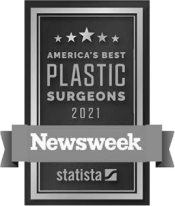
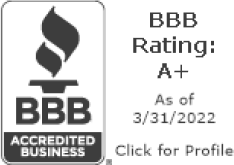
Philadelphia tummy tuck surgeon Dr. Brannon Claytor, MD, FACS is a double board certified plastic surgeon who has extensive nationally-recognized experience with abdominal aesthetic surgery. He has been on the teaching faculty at The Aesthetic Society (ASAPS) for the past 8 years.
Dr. Claytor is an expert in the tummy tuck surgical technique and has performed hundreds of tummy tucks at his Philadelphia plastic surgery practice. Dr. Claytor’s signature “drain-free tummy tuck” affords you a more comfortable postoperative recovery period.
During your personal consultation, Dr. Claytor will assess your needs and will guide you in determining whether you will need an extended tummy tuck, a mini tummy tuck, or a reverse tummy tuck to achieve your goals.
“I went in to see Dr Claytor for diastasis recti, but then I also decided on a mommy tuck and I must say it was so worth it. As confident as I may seem I always had some insecurities. Especially under my breast, my muscles must have spread out dramatically during pregnancy and going to the gym never fixed it, if anything it made it more noticeable… But this procedure definitely blew up my confidence in my abdominal area and the mommy tuck made my curves even better. I can’t say how happy I am with the result. Mama is looking even sexier. All I can say is trust the process, through out this journey I was mentally prepared and physically willing to except all the changes that came my way. And it was all worth it!”
To learn more about a tummy tuck with Philadelphia aesthetics surgeon Dr. Brannon Claytor, check out his photo gallery, review educational blogs on the topic or call (610) 527-4833 to schedule a consultation. Our cosmetic plastic surgery office serves patients from Philadelphia, Bryn Mawr, Main Line and surrounding areas.
References »
Shermak MA. Abdominoplasty with Combined Surgery. Clinics in Plastic Surgery. 2020 Jul;47(3):365-377. doi: 10.1016/j.cps.2020.02.001.
Tummy Tuck: Who is a good candidate for tummy tuck surgery? American Society of Plastic Surgeons.
Pollock TA, Pollock H. Progressive tension sutures in abdominoplasty: a review of 597 consecutive cases. Aesthetic Surgery Journal. 2012 Aug;32(6):729-42. doi: 10.1177/1090820X12452294. Epub 2012 Jun 29. Erratum in: Aesthetic Surgery Journal. 2012 Sep;32(7):910.
Luis H. Macias, Edwin Kwon, Daniel J. Gould, Michelle A. Spring, W. Grant Stevens, Decrease in Seroma Rate After Adopting Progressive Tension Sutures Without Drains: A Single Surgery Center Experience of 451 Abdominoplasties Over 7 Years, Aesthetic Surgery Journal, Volume 36, Issue 9, October 2016, Pages 1029–1035, https://doi.org/10.1093/asj/sjw040
Areas Served:

Medically reviewed by Dr. R. Brannon Claytor — Updated on Apr 3, 2025


